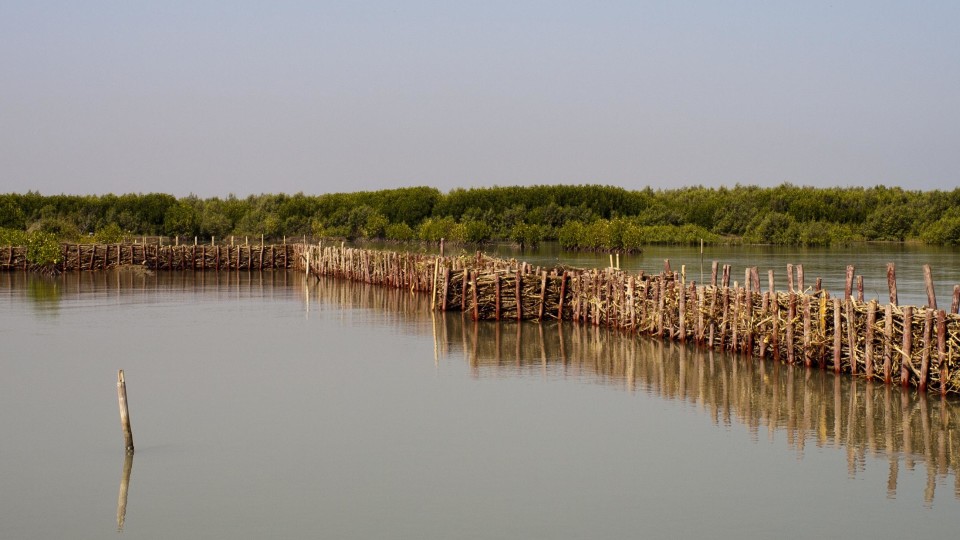One of the greatest challenges in coastal engineering is reducing the carbon footprint, according to Sander Dekker and Hedwig Thorborg – who are working with the two largest dredging companies globally (Van Oord and Boskalis respectively). Generally, emission reductions in the dredging sector are achieved by employing more energy efficient vessels, using cleaner fuel and minimising transport distance during construction, which may enable a CO2 reduction of around 10-20 per cent. But recent exploratory research by Deltares and Royalhaskoning DHV shows that the carbon footprint of coastal infrastructure projects may be more significant and complex than previously thought.
The demand for coastal infrastructure is increasing, as nations wish to enhance their flood defences and coastal protection in response to climate change impacts. This often involves construction of breakwaters, dams and dykes and increasingly also ‘soft’ sea defenses using beach and foreshore replenishment.
Such projects often involve processing of sediments. Harry Veld (Deltares) recently discovered in laboratory experiments that organic-rich sediments may emit up to some dozens of kg CO2 equivalent per m3 when exposed to the atmosphere. In comparison, other emissions during construction typically amount to 2 to 5 kg CO2 per m3 sediment.
The good news is that significant emission reductions are possible according to Jasper Fiselier (RoyalhaskoningDHV), who is developing a tool to estimate the carbon footprint of coastal infrastructure projects. For example by adopting a “Building with Nature” approach that combines green (ecosystem-based) solutions with grey (hard-engineering) techniques such as dams and sea walls.
Coastal ecosystems like mangroves, seagrass meadows and tidal marshes sequester carbon in their biomass and sediments. The resulting carbon rich sediments can be up to six meters deep and store carbon for very long times (up to millennia). Recent studies estimate carbon storage in the top metre of soil to be approximately 1,030 Mg CO2eq ha−1 for estuarine mangroves, 920 Mg CO2eq ha−1 for tidal marshes, and 520 Mg CO2eq ha−1 for seagrass meadows (The International Blue Carbon Initiative).
Moreover, an ecosystem-based approach offers additional benefits. For example, mangroves are known to enhance productivity in e.g. fisheries while also contributing to coastal protection and reducing maintenance costs of hard infrastructure. Wetlands International and partners restore mangroves to enhance coastal safety in Central Java using this Building with Nature approach. The carbon footprint of this project will be explored.
In the Netherlands, various large-scale Building with Nature projects are also being implemented already, demonstrating that these solutions are commercially viable. The Dutch government favours contractors that are actively seeking to reduce their carbon footprint.
One example is the Hondsbossche and Pettemer Sea Defence, which addresses the weakest link in the sea defence of the North-Holland coastline. The project involves the construction and maintenance of a new sandy coastline such that it offers room for nature development and recreation. The Van Oord – Boskalis joint venture was able to reduce the carbon footprint by 5 to 10 per cent by optimising design and execution as compared to their original tender.
Coastal ecosystems are currently among the most threatened ecosystems globally. Wetlands International hopes that examples like the Hondsbossche and Pettemer Sea Defence will trigger a paradigm shift, so that coastal infrastructure development becomes an opportunity for coastal ecosystems rather than a threat.
Boskalis and Van Oord are reducing their carbon footprint by participating, for example, in the CO2 performance ladder and collaborating with Deltares, RoyalhaskoningDHV, Wetlands International and Clean Shipping Coalition, among others, to develop innovative solutions to further reduce emissions.
This article was posted in Outreach Magazine, distributed during UNFCCC COP21 in Paris.

